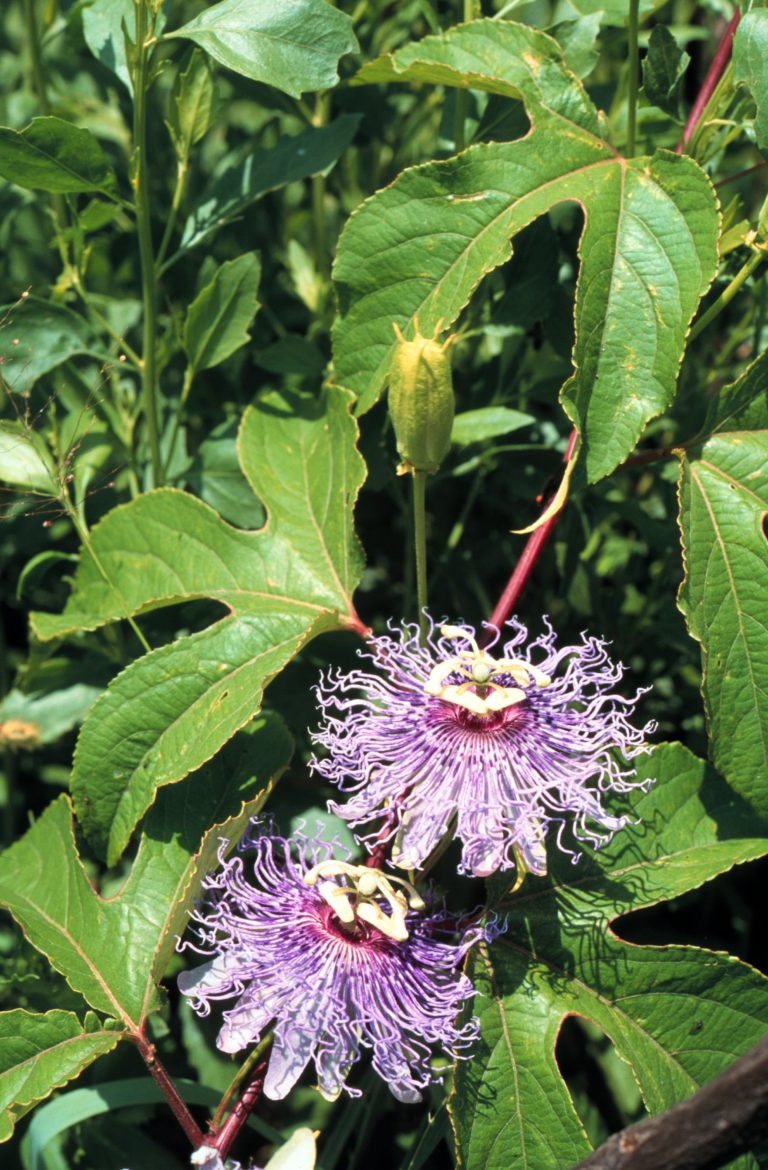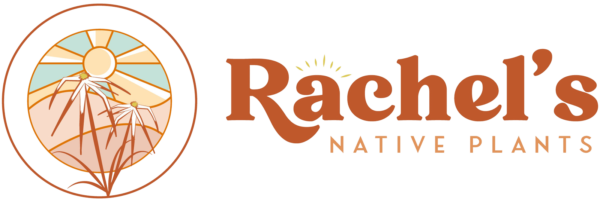Purple Passion Flower is an attractive, fast -growing perennial vine reported to occur in most counties of NC and in most Southeastern states. Climbing by means of axillary tendrils, it grows to 12 feet (some say up to 25 feet, but we have not seen that) and is naturally found in sunny, recently disturbed areas. It has a fascinating, complex flower structure which roughly looks like a purple ring with a yellow cross in the center. The fruits of the Purple Passion Flower, called Maypops, are egg-shaped and green, turning yellow when ripe. The fruit is edible, either fresh or cooked up into a jelly or jam. This plant also has medicinal properties and has been used in the treatment of anxiety and insomnia. Purple Passion Flower is a larval host for a number of butterflies. It has always been recognized as special, and the Ocoee River is named for the Cherokee word for this plant. Since it spreads aggressively by rhizomes, it should only be grown in naturalized areas. With it’s vibrant, quirky and colorful flowerhead, the Passion Flower is a beautiful and interesting vine to add to a wild garden.
NURSERY HOURS
Wednesday: 10-4 Thursday: 10-6 Friday-Saturday: 10-4 Sunday: 12-4
Passiflora incarnata

Key Info
Scientific Name: Passiflora incarnata L.
Common Names: Purple Passion Flower, Purple Passion Vine, Maypop, Apricot Vine, Wild Apricot
Family Names: Passifloraceae
Plant Type: Vine
Leaf Retention: Deciduous
Flower Color: Lavender
Special Characteristics: Attracts butterflies, Fruit edible, Attracts birds, Climbs by tendrils, Rhizomatous, Tolerates drought, Showy fruit, Flowers fragrant, Attracts bees
Additional Info
Habit: Herbaceous perennial vine (where winters are warm it may be more woody) which climbs by axillary tendrils, and spreads by root suckers.
Height: up to 12' long
Spread: 3' to 6'
Soil Conditions: Average to dry, rich, non-saline clays, loams, sands.
Leaves: The alternately arranged, palmately 3-lobed (or occasionally 5-lobed), serrated leaves grow 5-6 in wide by 6 to 8 in long and have two characteristic glands (nectaries) at the base of the blade on the petiole.
Flowers (or reproductive structures: The intricate, 2½ - 3 inch, self-sterile flowers have 10 bluish-white tepals (petals and sepals) supporting a fringe of white and purple filaments called a corona between and tepals and the prominent white stigma and style and 5 stamens. The flowers blossom from the ground up.
Fruit: Egg-shaped, leathery berries develop during a 2-3 month period after flowering. Seeds are brown and ripened and the pulp edible when the berry is soft and yellowish. The green fruits 'may pop' when stepped on (Wikipedia)
Natural Distribution: Roadsides, meadows, woodland edges, prairies, pastures, savannahs, stream and riverbanks.
USDA Hardiness Zone: 5 to 9
USDA Wetland Indicator Status in NC: FACU
Pollination: Bumble bees and various other bees suck nectar and collect pollen and pollinate the flowers (Illinoiswildflowers.info).
Wildlife Connections: Ants suck nectar from extra-floral nectaries at the base of the leaves and at the base of bracts underneath the flowers and buds; birds eat the fruit. The leaves are larval host for Gulf Fritillary, Zebra Longwing, Crimson-patch Longwing, Red-banded Hairstreak, Julia Butterfly, Mexican Butterfly.
Propagation: Seed germination is low. 6-8 inch stem cuttings should be taken early in the season.
